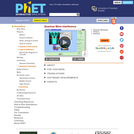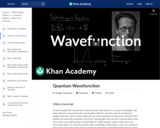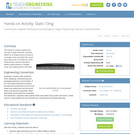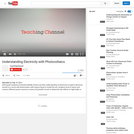
This course offers an introduction to the basic concepts of the quantum theory of solids.
- Subject:
- Physical Science
- Physics
- Material Type:
- Full Course
- Provider:
- MIT
- Provider Set:
- MIT OpenCourseWare
- Author:
- Wen, Xiao-Gang
- Date Added:
- 09/01/2006

This course offers an introduction to the basic concepts of the quantum theory of solids.

When do photons, electrons, and atoms behave like particles and when do they behave like waves? Watch waves spread out and interfere as they pass through a double slit, then get detected on a screen as tiny dots. Use quantum detectors to explore how measurements change the waves and the patterns they produce on the screen.

In this video David gives an introductory explanation of what the quantum wavefunction is, how to use it, and where it comes from.

This hands-on activity explores the concept of static electricity. Students attract an O-shaped piece of cereal to a charged comb and watch the cereal jump away when it touches the comb. Students also observe Styrofoam pellets pulling towards a charged comb, then leaping back to the table.

Students come to understand static electricity by learning about the nature of electric charge, and different methods for charging objects. In a hands-on activity, students induce an electrical charge on various objects, and experiment with electrical repulsion and attraction.

Sixth grade students at Eckstein Middle School use their understanding of electricity to explore electrical current in a circuit with photovoltaic cells.Using a lamp to model the sun, students work in teams and connect different power sources in series and parallel circuits to determine the effects on light bulbs or small motors. Discussion between students about the differences in voltage and the flow of electrons from negative to positive terminals provide opportunities for students to explain their learning and for the teacher to assess their understanding.Learning is extended beyond the experiment as students use photovoltaic cells to power equipment and offset electrical load in the classroom.